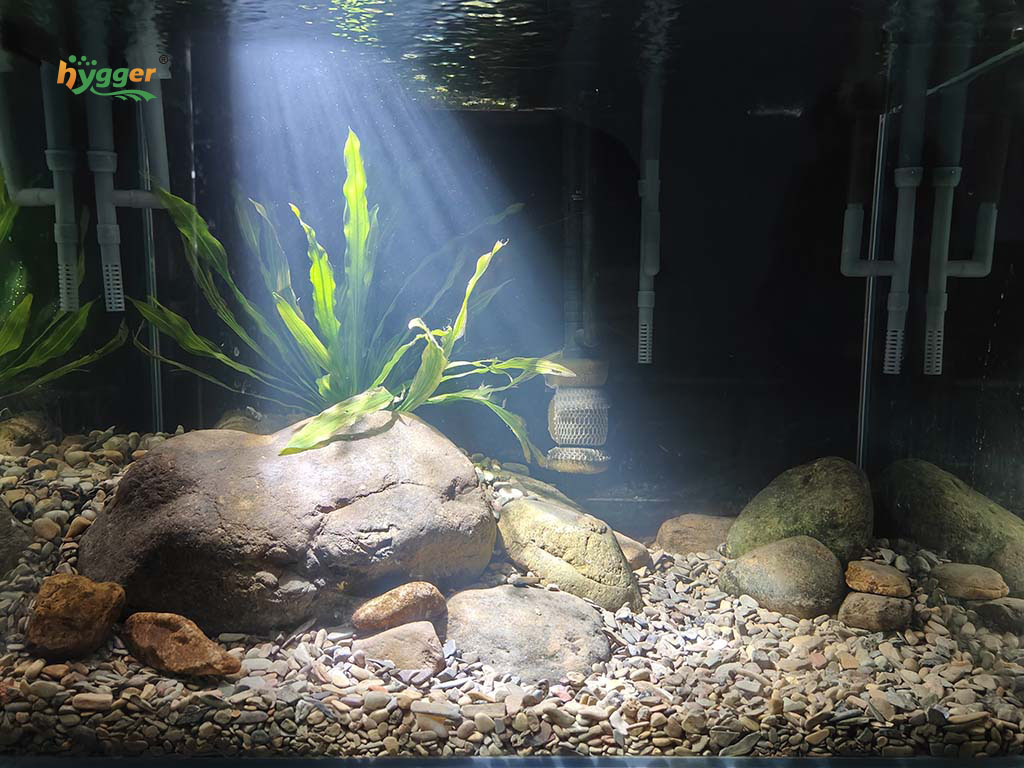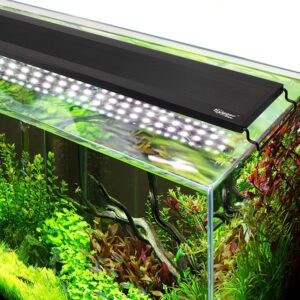How to Identify and Remove Blue Green Algae in Tanks
Blue green algae, often known as cyanobacteria, maybe a persistent foe for aquarium owners, infecting fish tanks with their unattractive presence. In this detailed tutorial, we will dig into the art of identifying blue green algae in aquariums and how to identify the blue green algae, investigate the possible advantages of these organisms, discover the underlying causes of their multiplication, and provide you with practical, natural techniques to reduce this aquatic annoyance.
Learning how to deal with blue-green algae is critical for maintaining a bright and healthy undersea habitat, whether you’re a seasoned aquarist or a beginner in the world of fishkeeping.
Identifying Blue Green Algae
Recognizing blue green algae in your aquarium is the first step to combatting its presence. Blue green algae have some distinct characteristics that set them apart from other forms of algae. If you detect these traits in your tank, you most certainly have a blue green algae attack.
- Appearance: Blue green algae are not algae, but rather a form of bacteria. They usually take the form of a slimy, bluish-green coating that can cover numerous surfaces in your tank. This film, which resembles a carpet, can be found on decorations, substrates, and even the tank’s glass.
- Texture: Touching blue green algae feels sticky or mucous-like. This is a distinguishing trait from genuine algae. Regular green algae or diatoms, on the other hand, have a coarser texture.
- Resident: Blue green algae often appear in sections of the tank with less water flow and more organic debris. The ground, pebbles, and driftwood are their hiding places.
- Smell: The terrible odor is another obvious indicator of blue-green algae. It has an earthy or musty stench that may be highly unpleasant.
Does Blue green algae benefit in aquariums?
While blue green algae might be an issue in your tank, they can also provide some benefits. It’s critical to recognize that not all algae are hazardous and that in tiny amounts, blue-green algae may benefit your aquarium ecology.
Oxygen Production
The ability to use sunlight for photosynthesis is one of the most interesting features of blue green algae in aquariums. Similar to plants, blue green algae may use photosynthesis, the process by which plants convert light energy into energy and produce oxygen. Fish, invertebrates, and even beneficial microorganisms in your tank will all benefit greatly from this oxygen creation. But sometimes lots of oxygen production costs fish health negatively.
Nitrate Reduction
To improve the general health of your fish, blue green algae can help lower the nitrate levels in your tank. An aquarium’s nitrogen cycle frequently produces nitrate, which can be harmful at high concentrations. The natural nitrate remover blue green algae may both absorb and consume nitrates.
Note: Despite these potential benefits, blue green algae may easily go out of control and cause a slew of issues, making efficient management of their presence critical.
Why is there blue algae in fish tanks?
To deal with blue green algae, you must first understand why it occurs in your fish tank in the first place. Several factors contribute to the growth of these unwanted visitors:
- Excess Nutrients: Excess nutrients in the water, particularly nitrates and phosphates, allow blue green algae to proliferate. Overfeeding your fish or failing to do regular water changes might result in a nutrient-rich environment perfect for their growth.
- Poor Water Circulation: Low water flow areas generate stagnant circumstances in which blue green algae can grow. To inhibit their growth, make sure your tank has enough water circulation.
- Inadequate Lighting: Blue green algae do not need a lot of light to grow. They can proliferate even in low-light environments, making it impossible to manage their presence just by lighting changes.
- Improper Tank Maintenance: Failure to perform regular tank maintenance, such as tank cleaning and water changes, can result in the buildup of organic debris, which supports the growth of blue green algae.
Kills the Blue green algae naturally
Now that you’ve discovered the blue green algae in your tank and understood why it’s there, it’s time to talk about natural ways to get rid of it. Here are some techniques for dealing with this troublesome invader.
By addressing the above contributing elements, you may create a setting that is less favorable to the growth of blue green algae.
Manual Removal
The first step in reducing blue green algae is to remove as much as possible by hand. To remove the slimy layer from your tank’s surfaces, use a siphon or an algae scraper. Make an attempt to be thorough and consistent in your efforts.
Adjust Feeding Habits
Overfeeding can result in an abundance of nutrients in your tank, which blue green algae love. Make sure you’re not giving your fish more food than they can devour in a few minutes. Proper food habits can aid in nutrient reduction.
Improve Water Quality
Regular water changes are required to keep water quality high and nutrient concentrations low. Weekly water changes of 10-20% of your tank’s water can help minimize blue green algae development.
Introduce Algae Eaters
The blue green algae may be controlled by some fish and invertebrates, such as Siamese algae eaters, Amano shrimp, and several species of snails. Including these species in your tank can give a natural solution to the problem.
Adjust Lighting
While blue green algae may flourish in low-light environments, lowering the quantity of light in your tank can inhibit their growth. A timer may also be used to guarantee that your aquarium has a regular light cycle.
Chemical Treatments (as a last resort)
If everything else fails, consider utilizing algae cides that are safe for the residents of your tank. However, this should only be used as a last option because these chemicals might disrupt the equilibrium of your aquarium.
Conclusion
Blue green algae may be a chronic issue in fish tanks, but with the appropriate information and proactive steps, you can easily avoid and limit its growth. Blue green algae must be identified by their look, texture, position, and smell. While these organisms offer potential benefits, their expansion can cause a variety of problems in aquariums.
Blue algae in fish tanks may be prevented by understanding the causes, which include excess nutrients and inadequate care. Manual removal, altering feeding behaviors, increasing water quality, introducing algae eaters, and tweaking lighting is all natural removal strategies that can help you gain control of your aquarium’s ecosystem. You can keep a beautiful and healthy fish tank free of blue-green algae with patience and determination.








I have white rocks in my aquarium.now there all a green and ugly looking.is there some kind of cimical I can add to the water to clean the rocks? it’s only on the rocks,,my tank is 20 gallon.
My filter is a in tank pices of junk
Hi Daniel Davila,
It recommends taking out the rocks from the tank then sink them in the chemical water for half an hour and clean them with some tool as well as clean the filter.
Clear water is more friendly for the tank inhabitants.
Thanks
hygger team